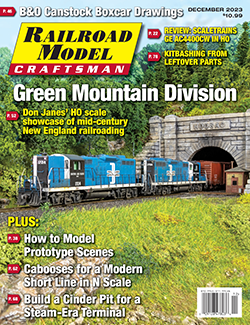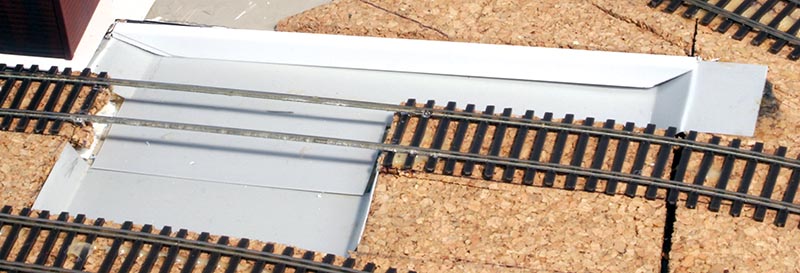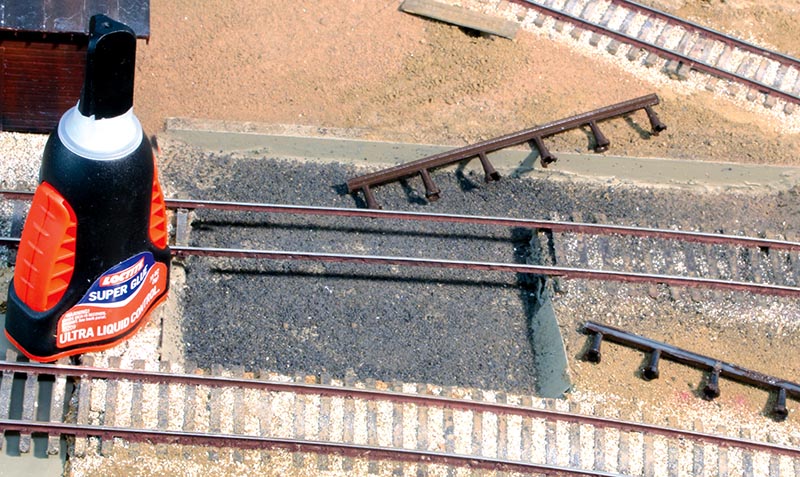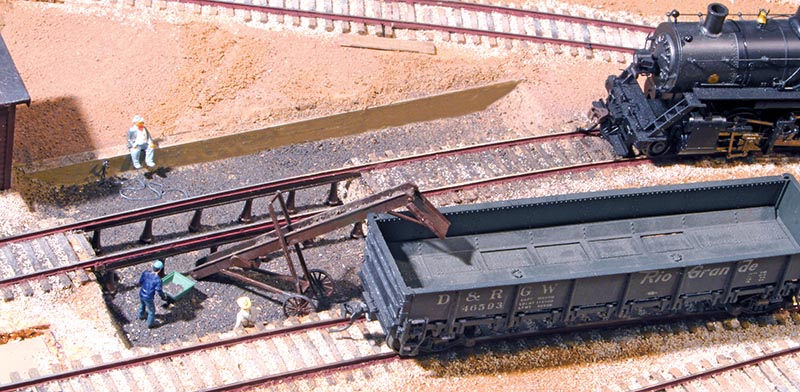 by Robert Schleicher/photos by the author
by Robert Schleicher/photos by the author
The cinder pit is one of the few railroad-owned “industries” to generate freight traffic. If the prototype for your railroad burned coal, then the engines produced cinders, and those cinders from those cinder pits are a significant “load.” If you are modeling the steam era, and you have more than one steam locomotive on your roster, your engine terminal should include a cinder pit.
The water tower is one of the most modeled railroad locomotive servicing structures, followed by the coal tower or trestle, then the sand house. If the railroad burned coal, the cinder pit or ash dump was as common as the coaling facility. The cinder pit is not an obvious prototype because many of them were either built into the coaling tower or were nestled beside it. The railroad usually referred to them as “ash” pits but some called them “cinders” or “clinkers.” Most modelers seem refer to them as “cinders” so I’ll stick with that to avoid confusion. The model companies that offer HO ballast or soil texture also can supply scale “cinders.”
The coal burned in the locomotives generated a lot of waste. Every tenderload of coal ends up at the bottom of the locomotive’s firebox and ash pan. The locomotives’ ash pans were not large enough to store more than a tenderload of burnt coal, so the waste was usually dropped about the same time the tender was filled with a fresh load of coal. The locomotives would produce between one and two cubic yards (about 1,000 lbs.) of cinders on an average run. It take a lot of cinders to load a gondola to even a 20-ton capacity, so loaded cars were usually replaced with empties on a schedule rather than only when the cars were full.

If your grandfather or great-grandfather happened to live in one of those towns with an engine terminal that serviced coal-burning steam locomotives, then cinders were part of their everyday lives. Getting a cinder in the eye was a common occurrence, often requiring a trip to the family doctor to safely remove one. I was a wee lad living in Cheyenne, Wyo., where the last of the world’s largest coal-burning engines survived, and getting a cinder in the eye was a rite of passage. Most American homes were heated with coal up until the middle of the 20th century, which also required the periodic removal of cinders and ash on a much smaller scale.
The cinder pit can provide a regular source of loaded cars comparable to many private industries. It is unlikely that your layout has a need for more fill or ballast, so the loads of cinders should probably be designated to be shipped to an industry “off-line.” Cinders were used by some railroads as ballast for branch lines and sidings, particularly near the turn of the last century. The cinders would deteriorate and soften somewhat over time so the cinder ballast needed to be replaced more frequently than stone. Cinders were also used for fill, with the same chance of deteriorating over time. Some went to industries that used them to make — yes — cinder blocks, or as a component of cement.

Cinder Pits
Locomotives had be positioned over a pit of some kind so the cinders could be dropped from the opened ash pan. The type of pit varied with the size of the engine terminal. A small branch line or narrow gauge engine facility might have a simple 4-foot square by 2-foot deep open cinder pit, but most pits were much larger. There were two distinct styles of pits, one only about 10 feet long and the other ranging from 40 to 200 feet or more. The longer pits made it possible for the cinders and ashes to be dumped with the engine moving and the ash pan partially open to spread the pile thinner for quicker cooling. If the cinders were lifted into gondolas using one of the conveyors like the Robertson from SS Ltd. (no. SS11000) or Fairbanks-Morse (Walthers no. 933-3181), the load of cinders was dumped into a pit only about 10 feet long. Those pits would not hold much more than an ash pan-load of cinders, so an open gondola was usually parked on the adjacent track so the conveyor could be turned on and the pit emptied as quickly as the cinders could be cooled.
The longer pits were the prototypes for the model of the Basalt, Colo., cinder pit on these pages. This pit was just 60 feet long and was emptied from the floor of the pit with either shovels or portable conveyors. There were only two tracks, the one above the pit and an adjacent track for the empty gondolas to sit until they were judged to be full…



